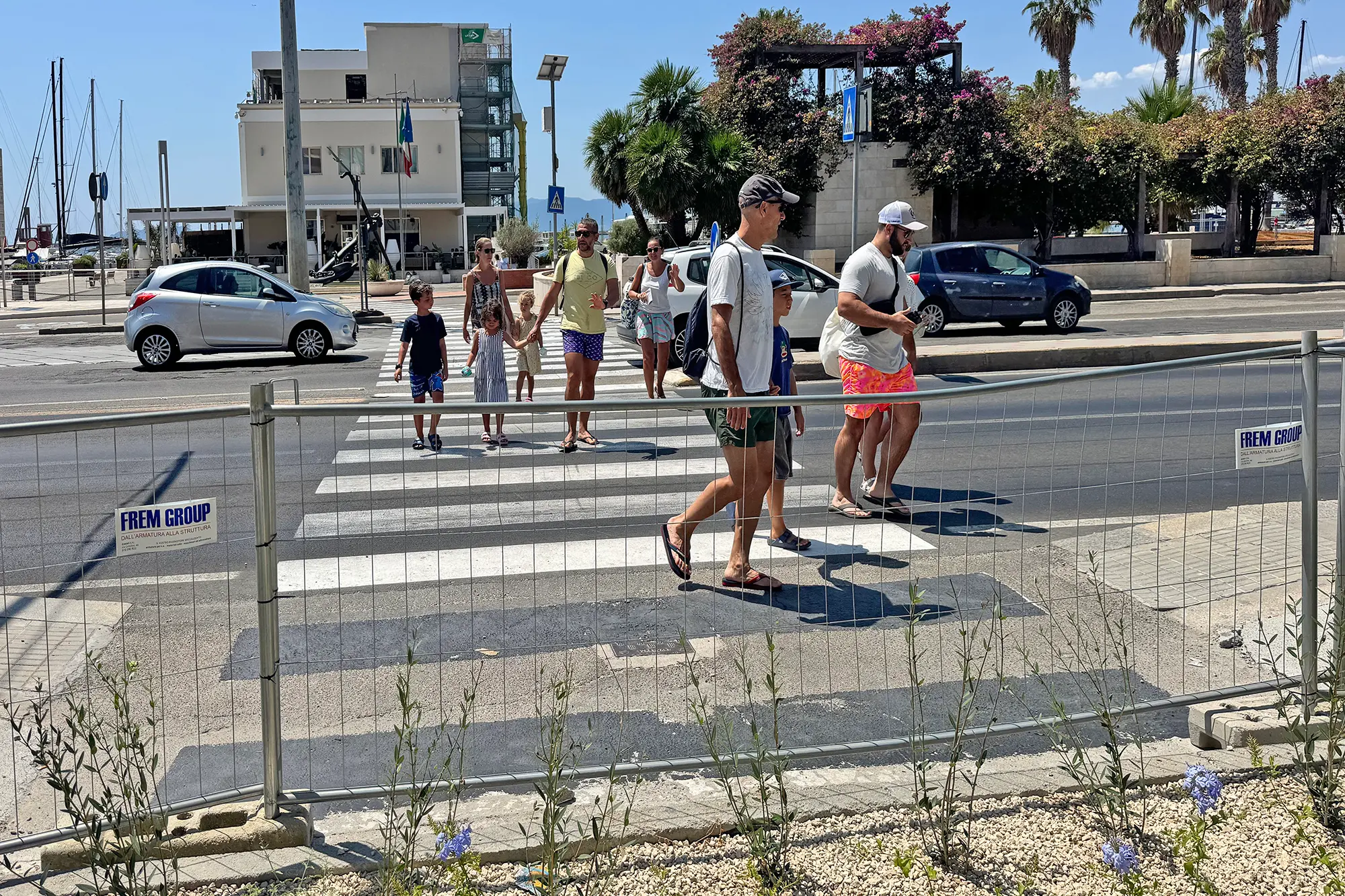Cagliari: Russian roulette at the pedestrian crossing on Via Roma
The City Council is taking action and is ready to realign the traffic lights and turn the one near the former Port Authority back on. Crossing has become dangerous: winding roads, disruptions, and protests.Per restare aggiornato entra nel nostro canale Whatsapp
If it were just a matter of wasted time (to cross 20 meters as the crow flies in under a minute, you need to walk at least 400 meters, and factor in over 6 meters), perhaps it wouldn't be the most serious problem. But since the safety of pedestrians crossing them is also a concern, that's a different story.
Welcome to the pedestrian crossings on Via Roma: there are those on the port side that bump into the fence of the new promenade, like something out of a poorly made comic book or a play on fantasy; there are the faded ones, and finally the "ghost" ones. The most dangerous: unmarked crossings, therefore effectively nonexistent, but in reality as if they were because Cagliari residents and tourists, challenging fate and the reflexes of motorists, continue to use them to shorten their routes. "The pedestrian crossings that end in the garden are a symbol of how public works are carried out in Cagliari," thunders Giuseppe Farris, city councilor for CiviCa 2024. "They follow stereotypes that ignore the identity of the places and the functionality of the works. It seems the aim is to spend the largest amount of community resources ever received. What could one expect from someone who had the brilliant idea of installing a ping pong table on Via Roma?"
The case
The real joke for those crossing them is in front of Rinascente: from there, to get from the porticoes to the port side, you have to do a bit of a diversion. Without a direct crossing (there hasn't been one for at least two years, since construction began on Via Roma), you have to wait for the traffic light to go toward the Town Hall (one minute and twenty-one seconds), then wait for the green light toward Piazza Matteotti (just over another minute), from there you cross the square to the traffic light on Via Molo di Sant'Agostino. It takes over six minutes to reach the port.
The same goes the other way around. If, however, you try to cut the loop and cross where you can't, from the port to Rinascente—a highly dangerous practice that continues to be practiced, especially by tourists arriving in the city—it takes less than a minute, considering that to do so you have to wait for the red light that stops cars arriving from Via Molo Sant'Agostino and those entering Via Roma from Viale Colombo. "Since they've officially established the crossing in front of Rinascente, on the stretch just opened after the redevelopment" (they didn't exist there before the work), "why don't they also consider crossings on the opposite side, the port side, where everyone continues to cross, endangering themselves and motorists?" asks Pierluigi Mannino, leader of the FdI group in the Council. "We need to start thinking, getting out of the offices a little more and looking for solutions in the city," he adds.
The Municipality
"Meanwhile, on Monday or Tuesday at the latest, the traffic light on Via Roma," on the portico side, "which had been turned off during the work," explains Roads Councilor Yuri Marcialis. And this in itself is good news; even yesterday, crossing on those crosswalks was a test of fate. "The crosswalks must be spaced at certain intervals," generally every hundred meters, "now we'll check all the alignments," the councilor continues. But the most important aspect is that the City is studying a new road system on Via Roma that will reduce car traffic and, consequently, improve pedestrian safety. "We're reviewing the entire road system, also in anticipation of the opening of the ARST construction site for the metro in Piazza Matteotti," the councilor continues. And he concludes: "We will realign the traffic lights and change the direction of traffic on Via Crispi," which will prevent, as happens today, those who need to enter Piazza del Carmine from having to bypass Via Roma.
Mauro Madeddu
